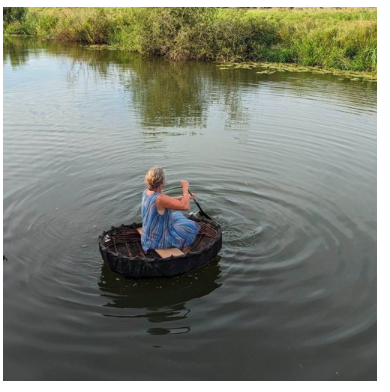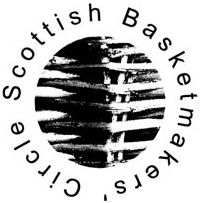Article from Julie Gurr on Coracle making in East Sussex.
Along with dug out canoes, coracles are probably the oldest design of boat. There are many coracle designs from around the world, but they are all generally roundish in shape and have a woven frame made from local materials that is somehow made waterproof. The design we use is based on an Irish Boyne coracle that uses whole rods of willow or hazel. The frame is made upside down by sticking rods in the ground, weaving around them and then bending and tying the rods to make the base of the coracle. It is then pulled out of the ground and covered with calico and painted with bitumastic paint to make it waterproof.
There is a small window of time in the spring when the willow has dried just enough. It is still flexible but won’t shrink anymore as it dries completely.We tend to use this time to make things that use the bigger varieties we grow. Willow that is too big to fit into the soaking tank, and is also too big to store indoors. Things like hurdles and plant supports. Living next to the River Rother coracles seemed like an obvious choice for some of the bigger willow too. Coracles are small woven boats and we now have a small family of them here and teach others how to make them.
To read the full article visit Rye News
To find out more about Julie Gurr and the coracle making course usually held in spring visit her Willow Weaver website

